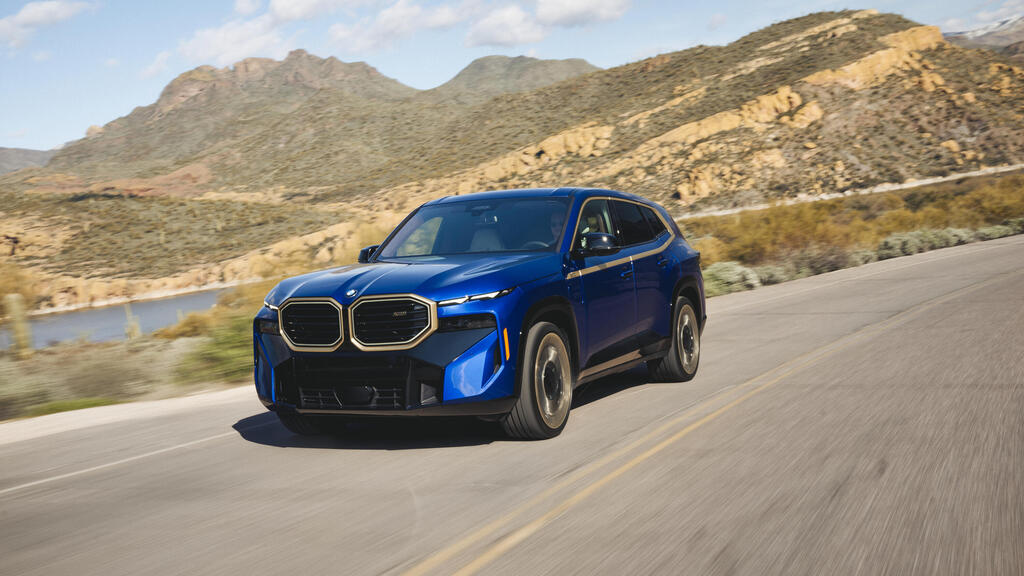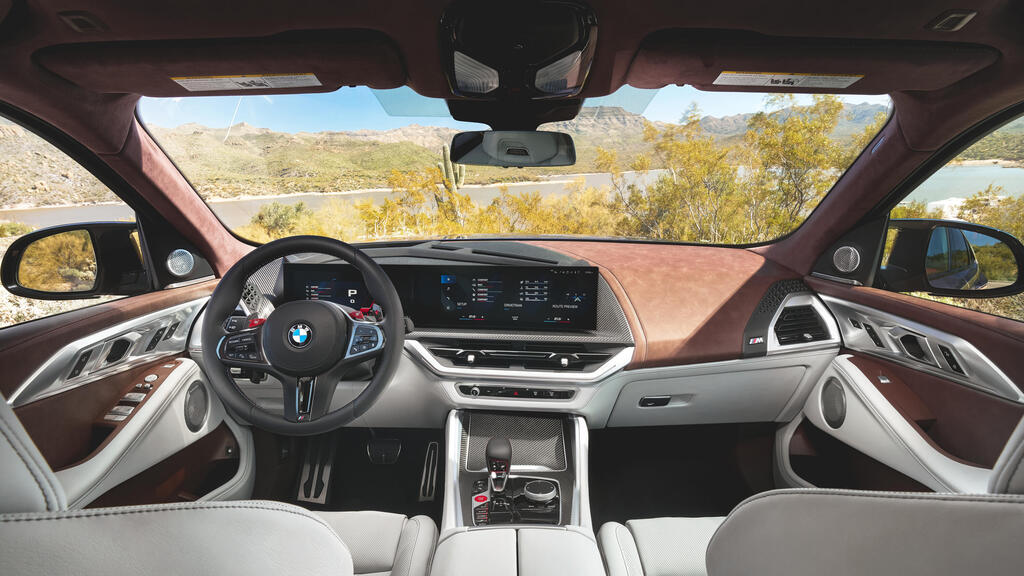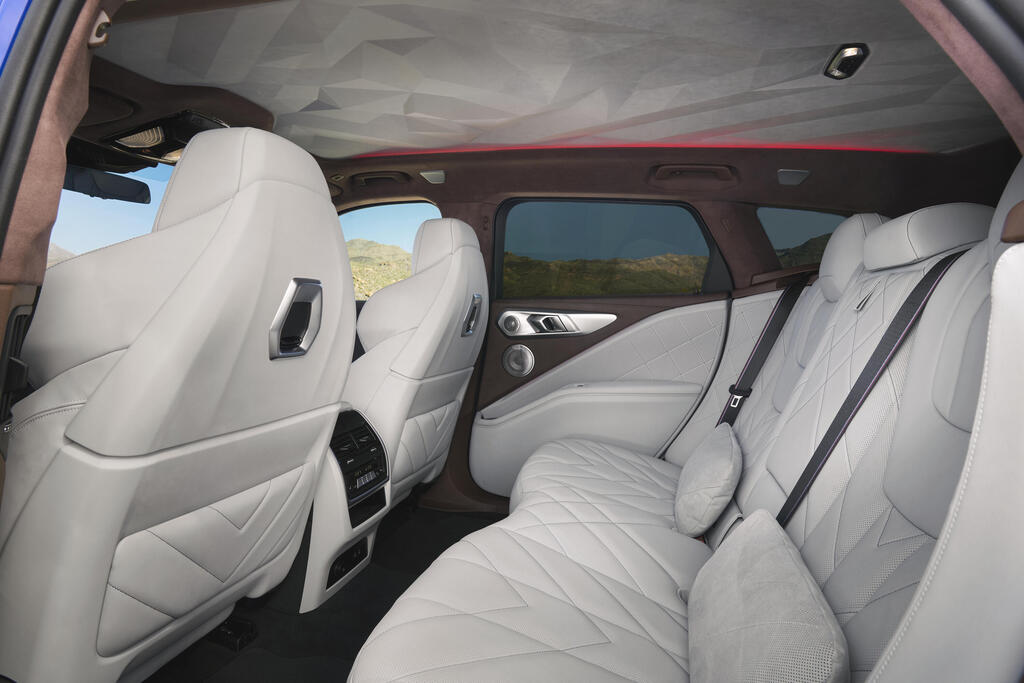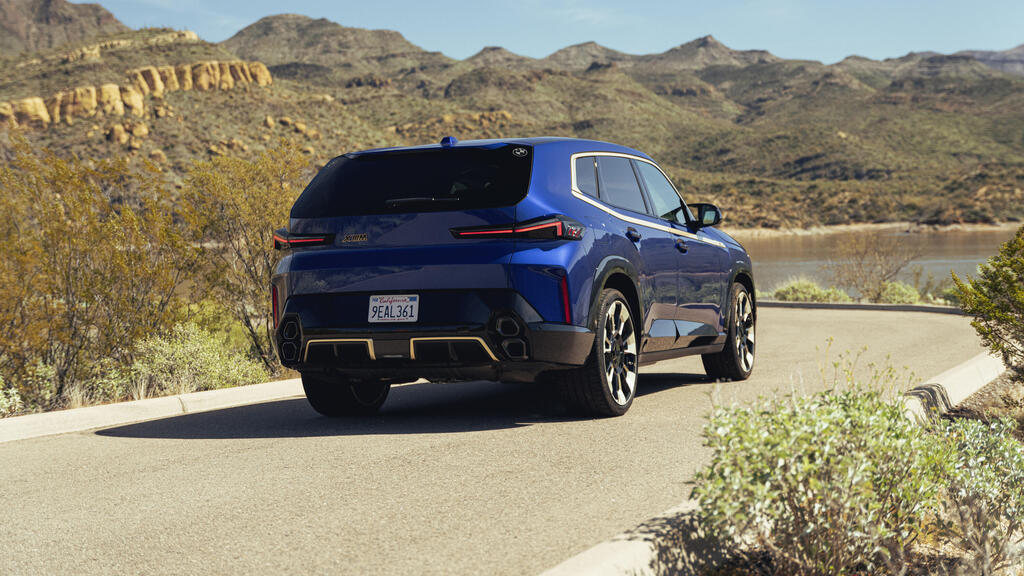Getting your Trinity Audio player ready...
There is no doubt that the XM is one of the most unique models ever produced by BMW. It is particularly special as it emerged from the gates of the esteemed performance division, which celebrated its anniversary last year.
Read more:
After all, it is the first model in the M lineup with an integrated electric propulsion system, which will serve future models from the same manufacturing house, including the next generation of the M5. It is also only the second car in M's history that is not based on an existing series. The first, by the way, was the legendary M1 from the late 1970s, which was essentially a homologation version of a dedicated racing car.
But the XM is different. It doesn't pretend to be a sports car, doesn't feel like a sports car and, apart from its tremendous power, it doesn't seem suitable for the sports division of a brand that prides itself on the joy of driving. It is primarily an attempt to contend with the leisure monsters of exotic manufacturers, such as the Lamborghini Urus and the Aston Martin DBX – with a price tag of NIS 1.3 million ($362,000), let's not forget.
Design and interior
The exterior incorporates BMW's new design language, which departs from the athletic elegance that characterized it in the past in favor of a more aggressive and muscular appearance. This is particularly noticeable in the front fascia, with an abundance of geometric shapes and lines that create an exaggerated visual load, a massive grille, and a copper accent. It features giant wheels (23") and a quartet of exhausts arranged in a less common configuration with one pair stacked above the other. At first glance, it looks like a creative frenzy of the design team before the division head arrives to calm things down.
The driver's environment is less dramatic and familiar than the brand's latest models, with a digital instrument cluster (12.3") and a large touchscreen display (14.9"), and very few physical buttons. It's just a shame that BMW left quite a few buttons to control the driving modes around the gear selector, a layout that is far from intuitive and often causes confusion.
The seats, on the other hand, are fantastic, straight from the sports items shelf of M, with excellent support and wonderful comfort (including heating, cooling and massage). Another item that came from the same storeroom is the three-spoke steering wheel with carbon fiber paddles for manual control of the gears, and a pair of red switches that quickly move to a pre-selected driving mode. The material quality is very high according to the price, with leather in every corner and impressive ambient lighting from the ceiling. There are plenty of storage compartments, cup holders that can heat and cool beverages, and the list goes on.
The XM is based on the shared CLAR (Cluster Architecture) platform with the X7, with an identical wheelbase (310.5 cm). However, it is 7 cm shorter (511 cm) and 8 cm lower (175.5 cm). The rear passenger space is quite generous, with a bench seat that resembles a living room armchair, and comes with a pair of dedicated cushions. The cargo area, on the other hand, is smaller by 120 liters (at 527 liters) compared to the X5.
Engine and Performance
The XM is (currently) the most powerful model from the M division. It combines a twin-turbocharged 4.4-liter V8 engine (489 hp) with an electric motor itself producing 197 hp, resulting in a total output of 653 hp. It also features an eight-speed automatic transmission and a permanent all-wheel drive.
However, this mighty powertrain hauls almost 2.8 tons, which is 300 kg heavier than the X5M. Despite that, it still manages to accelerate from 0 to 100 km/h in just 4.3 seconds. Impressive, right? Well, it's actually the slowest sprinter in the M performance lineup. It also doesn't sound particularly muscular but suffers from a frustratingly vocal exhaust, and the automatic transmission is not as quick and precise as in regular gasoline models – not in automatic mode, or in manual mode. By the way, BMW has already introduced a more powerful variant (Red Label) with 748 hp, a 0-100 km/h sprint time of 3.8 seconds, and a top speed of 290 km/h.
A 29.5 kWh battery assists in providing a pollution-free driving range of slightly over 80 theoretical km. This range is short by 20% compared to advanced plug-in hybrid SUVs like the Mercedes GLE or Range Rover Sport. Surprisingly, there is no option for fast charging (DC).
Comfort and Handling
To maintain high dynamic capabilities, most of the mechanical systems are derived from the X5M, including a limited-slip rear differential, aluminum suspension components, stiffer coil springs (air cushions in the X7), and connecting rods between the front dampers. Additionally, and for the first time again in the M performance division, there is active rear-wheel steering. There is also an active anti-roll bar system (operated electrically) to reduce body roll, and the batteries are integrated into the floor to lower the center of gravity as much as possible. In short, there is every possible assistance to neutralize the immense weight and prevent excessive body movements.
5 View gallery


BMW XM is not a sports car, it is not intended to be a sports car, and it definitely does not want to be one
And how is it truly dynamic?
Well, it definitely has the ability to maintain a very high pace on twisty and hilly roads, a pace that is undoubtedly faster than any competitor in its weight class. You don't need to brake at the last moment, nor do you need to maintain momentum through corners. You simply need to increase pressure on the accelerator and the hundreds of horses will take care of the rest.
But there is no reason (or need) to compare it to other M models. It is not a sports car, it is not intended to be a sports car, and it definitely does not want to be one. There is no connection between the driver and the machine that exists in every other model produced by this division. And that means that in terms of excitement and thrills, it's advisable to stay within realistic expectations. It is a powerful and fast car, but it is not sporty.
What about comfort?
It's not shining either. As a result of the stiff suspension tuning and low-profile tires, every bump or groove on the asphalt will be directly reported to the driver's seat and the other occupants, with less-than-desirable cushioning in our opinion.
In conclusion, BMW tried with the XM to break free from its mold, defy conventions, and shake up the automotive landscape with something different. And to the car enthusiasts, it deserves commendation for the effort, just as the management deserves credit for the daring.
You can try and fit the XM into familiar templates of luxury, hybrid, performance, or avant-garde. And you can also let go of those expectations and perceive them for what it is – a bold display of capability. Even if it's not the car you would take for a private parking spot, it's a wish that more brands would do the same. And it's a wish that BMW will continue to experiment.





